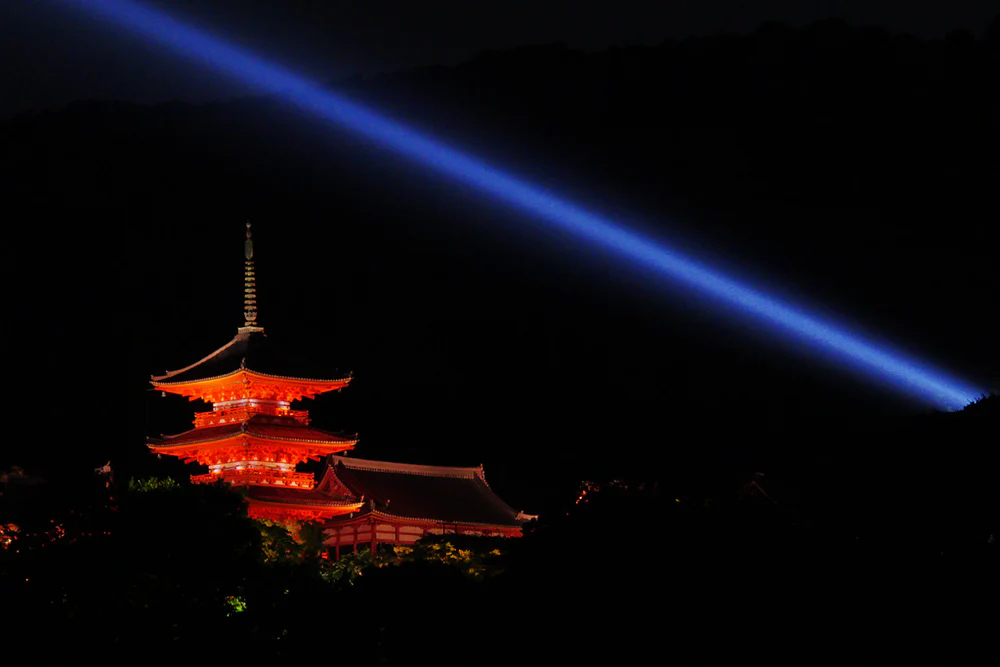
Einführung von Kyo-Yuzen
Kyo-yuzen ist eine der renommiertesten und aufwändigsten Färbentechniken in Japan, die hauptsächlich zur Dekoration von Kimono-Stoffen verwendet wird. Dieses Handwerk stammt aus Kyoto während der Edo -Zeit und verbindet künstlerische Qualität mit praktischer Nützlichkeit und heiratet die alte japanische Ästhetik der Einfachheit und Subtilität mit lebendigen naturalistischen Motiven. Kyo-yuzen wurde als kulturelles Emblem und spiegelte die luxuriösen Lebensstile der Kyoto-Aristokratie und ihre Vorliebe für raffinierte Schönheit wider. Im Laufe der Zeit ist es zum Synonym für Kyotos kulturelles Erbe geworden, das nicht nur ein Kleidungselement darstellt, sondern eine tragbare Form der Kunst, die ein erhebliches historisches Gewicht hat.
Das Markenzeichen von Kyo-Yuzen ist seine komplexe und präzise Färbetechnik, bei der mehrere Phasen des Skizzierens, Färbens und detaillierter Handmaintbühne beinhalten. Handwerker verwenden Reispaste, um komplizierte Muster auf empfindlicher Seide zu skizzieren. Die verwendeten Farbstoffe sind oft lebendig und halten eine Tiefe bei, die durch sorgfältige Schichtung und Schattierung erreicht wird. Diese akribische Methode ermöglicht die Schaffung detaillierter und nuancierter Designs, die von anmutigen Blumenmustern bis hin zu ausgefeilten Landschaften reichen, wodurch jedes Stück eindeutig exquisit ist.
Geografisches Merkmal
- Stadt und Präfektur : Kyoto, Präfektur Kyoto
- Bevölkerung : Ungefähr 1,46 Millionen Menschen
- Spezielle Produkte : Beyond Kiyomizu Ware ist Kyoto für seine exquisite Matcha (grünem Tee pulverisiert), die duftende Yuzu -Zitrusfrüchte und eine Reihe traditioneller Handwerks wie Uji -Tee, Kyoto -Seide und Bambushandwerk bekannt.
- Einführung : Kyoto mit seiner berühmten Vergangenheit als japanische alte Hauptstadt ist eine Stadt, in der Geschichte und Moderne in Harmonie zusammenkommen. Kyoto ist berühmt für seine atemberaubenden Tempel, traditionellen Teehäuser und kulturellen Festivals und dient als lebendiges Museum der reichen Geschichte Japans.

Geschichte von Kyo-Yuzen
Ursprünge und Gründer
Kyo-Yuzen wurde Ende des 17. Jahrhunderts von Yuzensai Miyazaki, einem Fan-Maler in Kyoto, entwickelt, der seine künstlerischen Fähigkeiten auf die breiteren Leinwand von Kimono-Stoffen anwenden wollte. Seine innovativen Techniken wurden in Kyotos modischen Gesellschaft rasch an Popularität gewonnen und die Grundlagen für ein berühmtes Handwerk legten.

Blühende Kunst
Während des 18. und 19. Jahrhunderts blühte Kyo-Yuzen unter der Schirmherrschaft von Kyotos Aristokraten und wohlhabenden Kaufleuten auf. Die Technik wurde über Generationen hinweg verfeinert, wobei jeder Handwerker ihre persönliche Note hinzufügte und die Farbstoffprozesse verbesserte, um immer aufwändigere und farbenfrohe Designs zu erreichen.

Erhaltung und Innovation
Im 20. Jahrhundert stand Kyo-Yuzen vor Herausforderungen aus modernen Textilproduktionsmethoden, aber es schaffte es, seine einzigartigen Techniken durch Initiativen unter der Leitung lokaler Handwerker und kultureller Bewahrungsgesellschaften zu bewahren. Diese Bemühungen stellten das Überleben und die Fortsetzung dieser traditionellen Kunstform sicher, wobei sie sich leicht an den zeitgenössischen Geschmack anpasste, ohne ihre historischen Methoden zu beeinträchtigen.

Merkmale von Kyo-Yuzen
Komplizierte Schönheit
Die komplizierte Schönheit von Kyo-Yuzen liegt in seiner Fähigkeit, einfache Seide in eine Leinwand lebhafter Geschichten zu verwandeln. Jeder Kimono ist ein Meisterwerk mit Szenen aus der Natur oder klassischen Literatur, die akribisch mit einer weichen, aber konstanten Hand bemalt sind. Die Präzision in diesem Handwerk ist nicht nur künstlerisch; Es spiegelt ein tiefes Verständnis des Materials und der kulturellen Bedeutung der verwendeten Motive wider und macht Kyo-Yuzen zu einer hoch angesehenen und begehrten Kunstform.

Farbbeherrschung
Ein charakteristisches Merkmal von Kyo-Yuzen ist die meisterhafte Verwendung von Farbgradienten und -schattierungen, die einen dreidimensionalen Effekt auf den Stoff erzeugen. Diese als "Bokashi" bekannte Technik ermöglicht es Farben, sich nahtlos ineinander zu mischen und ein Aquarell-ähnliches Finish zu erzeugen, das den natürlichen Fluss und die Eleganz des Stoffes verbessert. Handwerker widmen ihr Leben der Perfektionierung dieser Farbtechnik, die für die ästhetische Attraktivität des Handwerks von zentraler Bedeutung ist.

Moderne Anwendungen
In der heutigen Zeit wird Kyo-Yuzen weiterhin gefeiert und in die moderne Mode integriert. Designer integrieren traditionelle Muster in alltägliche Verschleiß, wie Schals, Krawatten und sogar Innenkunden, wodurch die Kunstform am Leben und relevant bleibt. Diese Anpassungsfähigkeit hat Kyo-Yuzen geholfen, sein Prestige und Anziehungskraft beizubehalten und sicherzustellen, dass sie eine geschätzte kulturelle Praxis bleibt, die nicht nur in Japan, sondern in der ganzen Welt für seine zeitlose Schönheit und seine akribische Handwerkskunst geschätzt wird.

